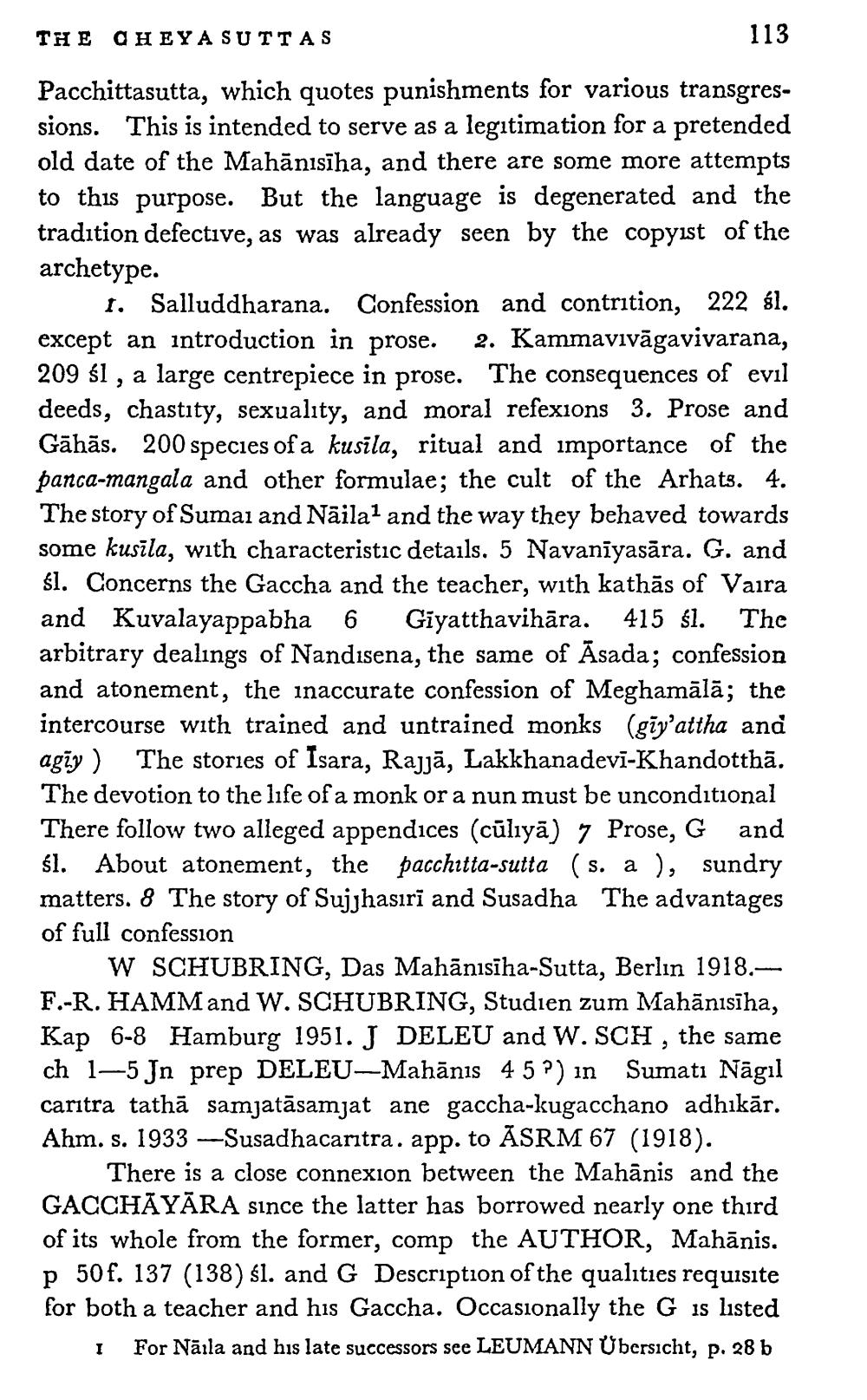________________
THE CHEYA SUTTAS
113
Pacchittasutta, which quotes punishments for various transgressions. This is intended to serve as a legitimation for a pretended old date of the Mahānisīha, and there are some more attempts to this purpose. But the language is degenerated and the tradition defective, as was already seen by the copyist of the archetype.
1. Salluddharana. Confession and contrition, 222 sl. except an introduction in prose. 2. Kammavivāgavivarana, 209 śl, a large centrepiece in prose. The consequences of evil deeds, chastity, sexuality, and moral refexions 3. Prose and Gāhās. 200 species of a kusila, ritual and importance of the panca-mangala and other formulae; the cult of the Arhats. 4. The story of Sumai and Nāilal and the way they behaved towards some kusila, with characteristic details. 5 Navanīyasāra. G. and śl. Concerns the Gaccha and the teacher, with kathās of Vaira and Kuvalayappabha 6 Gīyatthavihāra. 415 śl. The arbitrary dealings of Nandisena, the same of Āsada; confession and atonement, the inaccurate confession of Meghamālā; the intercourse with trained and untrained monks (gły'attha and agły ) The stories of Isara, Rajjā, Lakkhanadevī-Khandotthā. The devotion to the life of a monk or a nun must be unconditional There follow two alleged appendices (cūliyā) 7 Prose, G and śl. About atonement, the pacchetta-sutta (s. a), sundry matters. 8 The story of Sujjhasırī and Susadha The advantages of full confession
W SCHUBRING, Das Mahānisīha-Sutta, Berlin 1918.F.-R. HAMMand W. SCHUBRING, Studien zum Mahānisīha, Kap 6-8 Hamburg 1951. À DELEU and W.SCH , the same ch 1–5 Jn prep DELEU—Mahānis 4 5?) in Sumatı Nāgıl caritra tathā samjatāsamjat ane gaccha-kugacchano adhikār. Ahm. s. 1933 --Susadhacaritra. app. to ASRM 67 (1918).
There is a close connexion between the Mahānis and the GACCHĀYĀRA since the latter has borrowed nearly one third of its whole from the former, comp the AUTHOR, Mahānis. p 50f. 137 (138) śl. and G Description of the qualities requisite for both a teacher and his Gaccha. Occasionally the G is listed
For Nāıla and his late successors see LEUMANN Übersicht, p. 28 b




